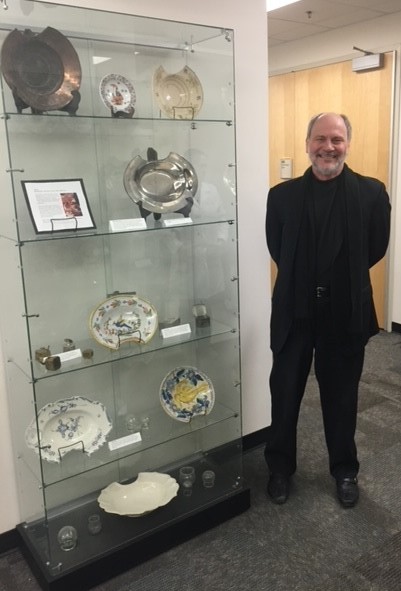
The Monroe’s Life Credo -"But man is not made for defeat. A man can be destroyed but not defeated."
Artifacts Quick Facts
- The oldest piece is a bleeding bowl that the British Museum dated to 1690.
- The most expensive object in his collection is a porcelain Bourdaloue, for which he paid $3,800. The Bourdaloue has an oval shape with a handle at one end and served as a lady's urinal. According to legend, it takes its name from a long-winded 17th-century French priest named Bourdaloue, who would lock the church doors when he was preaching his famously long sermons. Women used the urinals to relieve themselves under their voluminous skirts, he said.
Take a tour through several hundred years of medical history and view the Medical Artifacts Gallery
About Monroe's Medical Marvels
Dr. Monroe found beauty and inventiveness in these items, many of which others might see as “ghoulish relics” of a barbaric age. Many of the instruments in his collection came from England,

Permanent collections of his accumulated artifacts can also be seen at the Vierling House in Old Salem and Historic Bethabara Park. He also made donations to the Bowman Gray School of Medicine (now Wake Forest School of Medicine), Tulane Medical School and Harvard Medical School.
Seven years after making the gift, in 2016, Dr. Monroe passed away at the age of 93. Boo followed just two months later at age 92.
From a historical perspective, this is an amazing gift. It represents both a wide time period and a wide array of treatments. For example, the collection includes many wonderful artifacts that were used in bloodletting, a practice for centuries past. But it also includes many interesting items from the previous century, such as a mask used to administer ether as an anesthesia and instruments used in home deliveries of babies.
Having these items in one location – and available for people to see – is a huge asset for our institution and to the preservation of artifacts of the history of medicine. Having this collection on site is a great resource to illustrate how medical treatment has advanced through the years. The location of the collection is especially significant. It is right outside the door of the manufacturing facility, where bioengineered tissues and organs and cell therapies for patients are developed. This gives tour groups the opportunity to learn about the future of modern medicine, but also to understand more about exactly how far science and medicine has come.
View the Medical Artifacts Gallery
